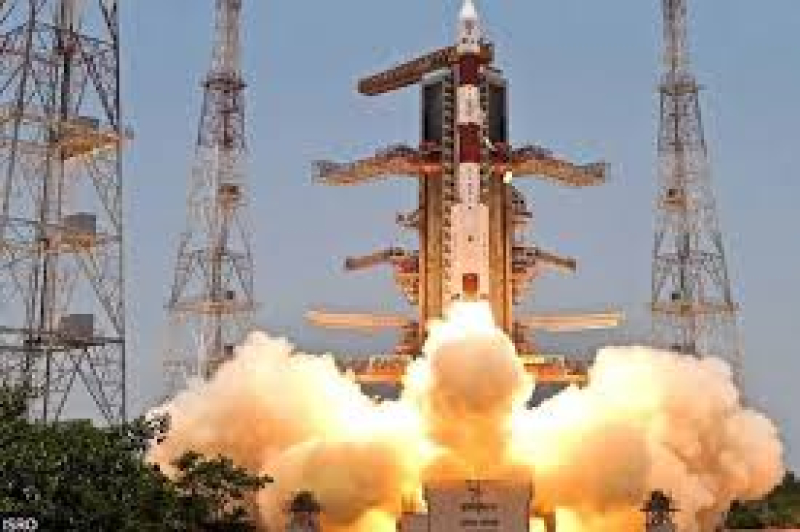- Tarique’s Flight Lands in Sylhet; Crowds Build at 300 Feet |
- Christmas in Bangladesh Thursday |
- Bangladesh Bars Internet Shutdowns, Restores BTRC Autonomy |
- Tarique Rahman Leaves London for Bangladesh After 17 Years |
- Govt welcomes Tarique Rahman’s return, assures full coop |
India's Sun mission reaches final destination

India's first solar observation mission has reached its final destination.
On Saturday, Aditya-L1 reached the spot in space from where it will be able to continuously watch the Sun.
The spacecraft has been travelling towards the Sun for four months since lift-off on 2 September.
Space agency Isro launched it just days after India made history by becoming the first to land near the Moon's south pole.
India's Prime Minister Narendra Modi said the mission was "a landmark" and an "extraordinary feat".
Posting on X, formerly known as Twitter, Mr Modi said: "It is a testament to the relentless dedication of our scientists in realising among the most complex and intricate space missions."
India's first space-based mission to study the solar system's biggest object is named after Surya - the Hindu god of the Sun, who is also known as Aditya.
L1 stands for Lagrange point 1 - the exact place between the Sun and Earth where the spacecraft has now reached.
According to the European Space Agency, a Lagrange point is a spot where the gravitational forces of two large objects - such as the Sun and the Earth - cancel each other out, allowing a spacecraft to "hover".
L1 is located 1.5 million km (932,000 miles) from the Earth, which is 1% of the Earth-Sun distance.
The final manoeuvre was performed on Saturday at around 16:00 India time (10:30 GMT) to place Aditya in L1's orbit, the Times of India reported.
Isro chief S Somanath previously told the BBC that the agency would trap the craft in orbit and would occasionally need to perform more manoeuvres to keep it in place.
Once Aditya-L1 reaches this "parking spot" it will be able to orbit the Sun at the same rate as the Earth. From this vantage point it will be able to watch the Sun constantly, even during eclipses and occultations, and carry out scientific studies.
The orbiter carries seven scientific instruments which will observe and study the solar corona (the outermost layer); the photosphere (the Sun's surface or the part we see from the Earth) and the chromosphere (a thin layer of plasma that lies between the photosphere and the corona).
After lift-off on 2 September, the spacecraft went four times around the Earth before escaping the sphere of Earth's influence on 30 September. In early October, Isro said they had done a slight correction to its trajectory to ensure it was on its intended path towards the final destination.
The agency says some of the instruments on board have already started work, gathering data and taking images.
Just days after lift-off, Isro shared the first images sent by the mission - one showed the Earth and the Moon in one frame and the second was a "selfie" that showed two of its scientific instruments.
And last month the agency released the first-ever full-disk images of the Sun in wavelengths ranging from 200 to 400 nanometres, saying they provided "insights into the intricate details of the Sun's photosphere and chromosphere".
Scientists say the mission will help them understand solar activity, such as the solar wind and solar flares, and their effect on Earth and near-space weather in real time.
The radiation, heat and flow of particles and magnetic fields of the Sun constantly influence the Earth's weather. They also impact the space weather where nearly 7,800 satellites, including more than 50 from India, are stationed.
Scientists say Aditya can help better understand, and even give a forewarning, about solar winds or eruptions a couple of days ahead, which will help India and other countries move satellites out of harm's way.
Isro has not given details of the mission's cost, but reports in the Indian press have put it at 3.78bn rupees ($46m; £36m).
The success of Saturday's mission means India joins a select group of countries that are already studying the Sun.
The US space agency Nasa has been watching the Sun since the 1960s; Japan launched its first solar mission in 1981 and the European Space Agency (ESA) has been observing the Sun since the 1990s.
In February 2020, Nasa and ESA jointly launched a Solar Orbiter that is studying the Sun from close quarters and gathering data that, scientists say, will help understand what drives its dynamic behaviour.
And in 2021, Nasa's newest spacecraft Parker Solar Probe made history by becoming the first to fly through the corona, the outer atmosphere of the Sun, reports BBC.

